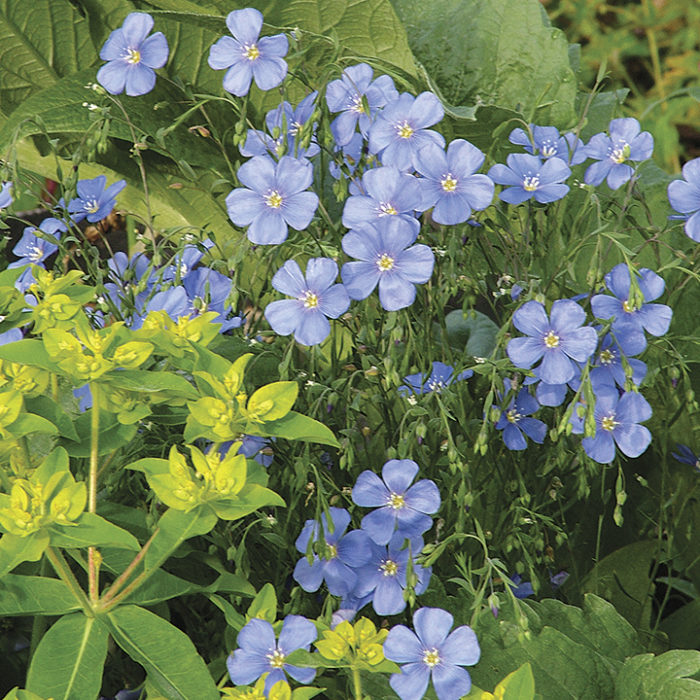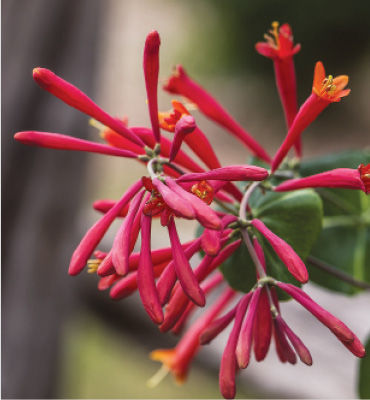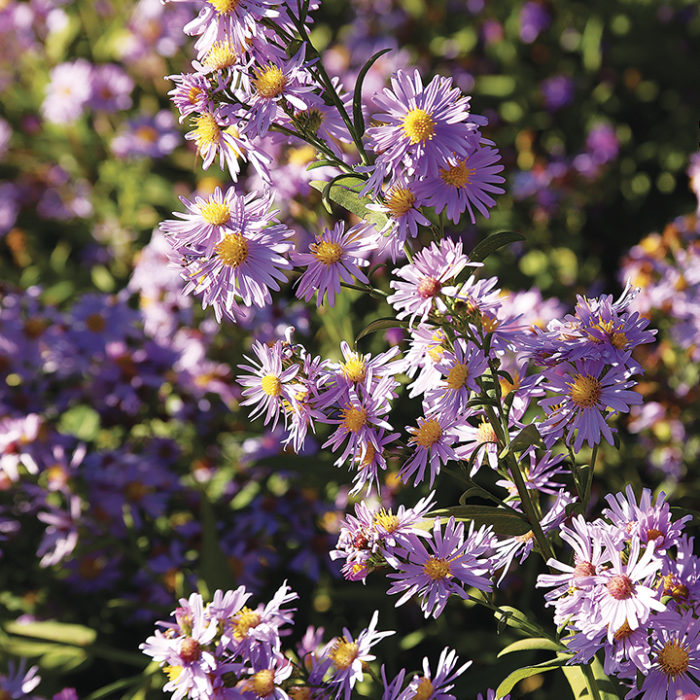1. ‘Firewitch’ Cheddar Pink

Name: Dianthus gratianopolitanus ‘Firewatch’
USDA Hardiness Zones: 3 to 9
Size: 1 foot tall and wide
Conditions: Full sun; loose, well-drained soil
With gorgeous foliage, showy blooms, and a nostalgic fragrance, ‘Firewitch’ is an exceptional selection of a garden classic. The low-growing perennial forms mats of silver-blue evergreen foliage that is resistant to deer browsing. A show of magenta blooms covers the plant in spring, filling the garden with a spicy clove-scented perfume butterflies cannot resist. ‘Firewitch’ is tolerant of heat and humidity. Perfect for containers or at the front of beds and borders, ‘Firewitch’ also works well in rock gardens or tucked along the edge of a flagstone path.
2. Blue Flax

Name: Linum perenne
Zones: 3 to 9
Size: 1 to 2 feet tall and 12 to 18 inches wide
Conditions: Full sun; dry to average well-drained soil
True-blue blossoms on graceful, arching stems define this gem of a plant. Few perennials bloom as prolifically as blue flax, which produces a profusion of new flowers daily. Individual flowers are short-lived, with a fresh flush produced each morning. This unique bloom cycle lasts 12 weeks from late spring through midsummer. Flowers sit atop wiry stems that look dainty but are incredibly tough. Short, fine-textured foliage lines the stems, complementing the papery blooms. Blue flax is drought and heat tolerant, and resists rabbit and deer browsing. These plants are short-lived but readily self-seed. Provide good drainage to encourage overwintering.
3. ‘Major Wheeler’ Coral Honeysuckle

Name: Lonicera sempervirens ‘Major Wheeler’
Zones: 4 to 8
Size: Vining 4 to 8 feet tall and 8 to 12 feet wide
Conditions: Full sun to partial shade; wide soil tolerance
Quickly cover a fence or trellis with vibrant blooms that draw hummingbirds and butterflies into the garden from miles around. ‘Major Wheeler’ is simply covered in red trumpet-shaped flowers starting in late spring and continuing all summer long. The selection is also notable for its remarkably clean mildew-resistant foliage. This twining vine needs a medium-size support to climb and is perfect for covering open fences. The species can be pruned to best suit your needs and schedule, as it blooms on old wood as well as new growth. ‘Major Wheeler’ tolerates dry soils and drought.
4. ‘Bluebird’ Smooth Aster

Name: Symphyotrichum laeve var. laeve ‘Bluebird’
Zones: 4 to 8
Size: 3 to 4 feet tall and 2 feet wide
Conditions: Full sun to partial shade; average to dry soil
A stunning vase-shaped wildflower for autumn, ‘Bluebird’ smooth aster produces a cloud of violet-blue blooms from September to October. Individual flowers are 1 inch in diameter and stand atop tall, arching branches that are excellent for cutting. ‘Bluebird’ attracts migrating monarchs and other fall butterflies. Plant it in drifts to best attract passing butterflies, or use it as a specimen in a border. These plants can be pinched back in June to encourage a denser habit. ‘Bluebird’ tolerates light shade, but may produce fewer blooms and require staking.
Kimberly Toscano is a horticulturist from Stillwater, Oklahoma.
Photos: (1), Steve Aitken; (2), Nancy J. Ondra; (3), millettephotomedia.com; (4), Carol Collins


















Comments
Log in or create an account to post a comment.
Sign up Log in